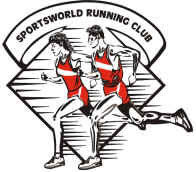Are you moving poorly because you are in pain or are you in pain because you are moving poorly?
If there’s been an identifiable incident that has caused the injury or pain, a sprain or a muscle tear for example, this would initiate a protective response to the area bringing on a form of compensation linked to the injury. In other words moving poorly because you’re in pain.
The flip side of this however are those chronic and recurring injuries or those that just came on and have worsened over time. Many of these are similar to overuse type injuries and possibly could be pain caused by moving poorly. Two key considerations with overuse & overuse type injuries is workload and biomechanics. In this case workload means -mileage volume, intensities and frequency and biomechanics means-kinetic chain, movement patterns and strength & stability. The better the biomechanics the greater the capacity for workload. It’s worth noting that the workload and biomechanics are interlinked in that as the body fatigues the biomechanics decrease in effectiveness. With weakness in the kinetic chain and/or with inefficient movement patterns the body could have a reduced workload capacity and will fatigue and become compromised more quickly.
In terms of the actual ‘workload’ the training stimulus should be sufficient and appropriate considering current fitness levels. Training sessions should be more like ‘building blocks’ than like ‘wrecking balls’. The increases should be progressive and avoid any drastic changes in overall workload, the components of volume, intensities and frequency should be managed accordingly. Recovery also plays an important role in the training cycle as this facilitates the adaptation which brings on increased fitness levels. An active recovery is often regarded as more beneficial than complete rest. Forms of active recovery would include Sport massage, yoga, Pilates, even an easy jog/run (relative to workload) can be thought of as active recovery. Adequate sleep is also vital for recovery.
Biomechanically the core is vital in providing stability during movement. In fact research shows there to be a co-contraction of the Transversus Abdominis and Multifidis deep trunk muscles on initiation of any movement of the limbs. This early activation and involvement in movement sets the tone as the kinetic chain and movement patterns unfold. For running a key clog in the kinetic chain is Glute Medius which provides important stability during stance phase. Typical of weakness here would be the dropping at the hip and the inward dropping of the knee during the ground contact phase. With the repetitive nature and over time the movement pattern moves towards inefficiency. Following the kinetic chain, weakness in the group of core muscles effects the hips, knees and ultimately down to the calf’s/Achilles, ankle joint mobility and plantar flexion during push off phase. Examples of exercises for strengthening glute medius would be resistance band ‘claim shells’ and ‘crab walks’. In way of ‘strength & stability’, good stability is hugely beneficial in improving biomechanics and improved movement patterns. Focusing solely on strength without addressing underlying biomechanical issues could act only to strengthen and reinforce the inefficiency.
















